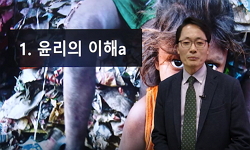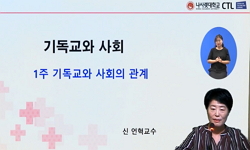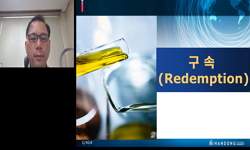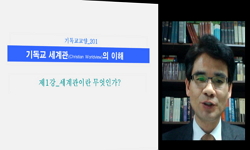Generally, people say that the March First Movement that took place in Honam(湖南) area was rather more passive than the other March First Movements that developed locally.And they explain this was because there was lack of man power that could lead...
http://chineseinput.net/에서 pinyin(병음)방식으로 중국어를 변환할 수 있습니다.
변환된 중국어를 복사하여 사용하시면 됩니다.
- 中文 을 입력하시려면 zhongwen을 입력하시고 space를누르시면됩니다.
- 北京 을 입력하시려면 beijing을 입력하시고 space를 누르시면 됩니다.
부가정보
다국어 초록 (Multilingual Abstract)
People in Honam area experienced Japan’s merciless massacre and suppression so naturally had higher anti-Japanese sentiment than those in the other regions.
Besides,in Honam having agriculture as its major industry, farmers’ exploitation and degrading to tenant farmers were far more seriousthan in the other regions on account of Japanese agricultural capitalists’ entrance into it and their pillageof land,so there was an even higher anti-Japanese struggle in Honam. Accordingly, Honam’s farmers resisted Japan’s forced ruling and colonial exploitation andwas actively involved in the March First Movement in order to struggle to defend their right to live.
Just like the other regions, the March First Movement in Honam was promoted mainly by religious circles and students. Even after Donghak(東學) Farmers’ Movement in 1894, Honam played its roles as the center of Cheondogyo(天道敎). Also, in Honam area, the US Namjangro(南長老) School missionaries performed their mission work aggressively and built Christian schools all over the place around 1910. Using Cheondogyo(天道敎) and Christian organizations,they developed the March First Movement systematically in Honam area. Meanwhile, purposeful celebrities and students in Honam also contributed considerably to the spread of the March First Movement in Honam, too.
Key words: The March First Movement in Honam(湖南) area, The Bloody History of Korea’s Independence Movement ,Cheondogyo(天道敎), Christian organizations in Honam area
Generally, people say that the March First Movement that took place in Honam(湖南) area was rather more passive than the other March First Movements that developed locally.And they explain this was because there was lack of man power that could lead Independence Movement due to the failure of Donghak(東學) Farmers’ Movement in 1894 and Japan’s tactic of great suppression on South Korea in1909.But this recognition that the March First Movement in Honam area was more passive than in the other areas is basedon the materials prepared by Japanese General Government,and it is quite different from the reality. According to 「The Table ofthe March FirstMovement」 contained in Pak Eunsik’s The Bloody History of Korea’s Independence Movement ,the March First Movement in Honam area did not any more passively develop than in the other regions but was quite active indeed.
People in Honam area experienced Japan’s merciless massacre and suppression so naturally had higher anti-Japanese sentiment than those in the other regions.
Besides,in Honam having agriculture as its major industry, farmers’ exploitation and degrading to tenant farmers were far more seriousthan in the other regions on account of Japanese agricultural capitalists’ entrance into it and their pillageof land,so there was an even higher anti-Japanese struggle in Honam. Accordingly, Honam’s farmers resisted Japan’s forced ruling and colonial exploitation andwas actively involved in the March First Movement in order to struggle to defend their right to live.
Just like the other regions, the March First Movement in Honam was promoted mainly by religious circles and students. Even after Donghak(東學) Farmers’ Movement in 1894, Honam played its roles as the center of Cheondogyo(天道敎). Also, in Honam area, the US Namjangro(南長老) School missionaries performed their mission work aggressively and built Christian schools all over the place around 1910. Using Cheondogyo(天道敎) and Christian organizations,they developed the March First Movement systematically in Honam area. Meanwhile, purposeful celebrities and students in Honam also contributed considerably to the spread of the March First Movement in Honam, too.
Key words: The March First Movement in Honam(湖南) area, The Bloody History of Korea’s Independence Movement ,Cheondogyo(天道敎), Christian organizations in Honam area
국문 초록 (Abstract)
호남지역은 일제로부터 무자비한 학살과 탄압을 경험하여 타 지역보다 반일감정이 클 수밖에 없었다.또한 농업이 주산업인 호남은 일본인 농업자본가의진출과 토지침탈로 인해 농민의 착취와 소작인화가 타 지역보다 훨씬 심해 항일 투쟁심이 매우 높았다.이에 호남지역 농민들은 일제의 무단통치와 식민지수탈에 반발하여 생존권 수호 투쟁 차원에서 3·1운동에 적극 가담하였다.
호남지역의 3·1운동 역시 다른 지역과 마찬가지로 종교계와 학생들이 중심이 되어 추진되었다.호남지역은 1894년 동학농민운동 이후에도 천도교의 중심지 역할을 담당하고 있었다.또 호남지역에는 미국 남장로파 선교사들에 의해선교 활동이 활발하게 전개되어 1910년을 전후하여 각 처에 기독교계 학교가설립되었다.이러한 천도교와 기독교 조직을 이용하여 호남지역에서는 조직적인 3·1운동이 전개되었다.한편 호남지역의 뜻있는 인사들과 학생들의 활동 역시 호남지역 3·1운동의 확산에 많은 기여를 하였다.
주제어 :호남지역의 3·1운동,한국독립운동지혈사,토지조사사업 반대투쟁, 전북지역의 3·1운동,전남지역의 3·1운동,천도교,기독교국문초록
일반적으로 지방에서 전개된 3·1운동 중 호남지역의 3·1운동은 타 지역에 비해 소극적인 모습을 보였다고 말해지고 있다.이것은 1894년 동학농민운동의실패와 1909년 일제의 소위 ‘남한대토�...
일반적으로 지방에서 전개된 3·1운동 중 호남지역의 3·1운동은 타 지역에 비해 소극적인 모습을 보였다고 말해지고 있다.이것은 1894년 동학농민운동의실패와 1909년 일제의 소위 ‘남한대토벌 작전’에 의해 독립운동을 지도할 인적기반이 상실되었기 때문으로 그 이유가 설명되고 있다.그런데 호남지역의 3·1 운동이 타 지역에 비해 소극적이었다는 인식은 조선총독부가 작성한 자료에근거한 것으로서 실상과는 거리가 먼 것이다.박은식의 한국독립운동지혈사에 나오는 「3·1운동 일람표」를 보면 호남지역의 3·1운동은 타 지역에 비해 결코뒤지지 않고 활발하게 전개되었음을 알 수 있다.
호남지역은 일제로부터 무자비한 학살과 탄압을 경험하여 타 지역보다 반일감정이 클 수밖에 없었다.또한 농업이 주산업인 호남은 일본인 농업자본가의진출과 토지침탈로 인해 농민의 착취와 소작인화가 타 지역보다 훨씬 심해 항일 투쟁심이 매우 높았다.이에 호남지역 농민들은 일제의 무단통치와 식민지수탈에 반발하여 생존권 수호 투쟁 차원에서 3·1운동에 적극 가담하였다.
호남지역의 3·1운동 역시 다른 지역과 마찬가지로 종교계와 학생들이 중심이 되어 추진되었다.호남지역은 1894년 동학농민운동 이후에도 천도교의 중심지 역할을 담당하고 있었다.또 호남지역에는 미국 남장로파 선교사들에 의해선교 활동이 활발하게 전개되어 1910년을 전후하여 각 처에 기독교계 학교가설립되었다.이러한 천도교와 기독교 조직을 이용하여 호남지역에서는 조직적인 3·1운동이 전개되었다.한편 호남지역의 뜻있는 인사들과 학생들의 활동 역시 호남지역 3·1운동의 확산에 많은 기여를 하였다.
주제어 :호남지역의 3·1운동,한국독립운동지혈사,토지조사사업 반대투쟁, 전북지역의 3·1운동,전남지역의 3·1운동,천도교,기독교국문초록
참고문헌 (Reference)
1 국사편찬위원회, "한민족독립운동사 (3)" 1989
2 국사편찬위원회, "한국사 47-일제의 무단통치와 3·1운동" 2001
3 국사편찬위원회, "한국독립운동사자료 5:3·1운동편"
4 한규무, "한국기독교와 역사 13" 2000
5 윤병석, "증보 3·1운동사" 국학자료원 2004
6 박찬승, "전남지방의 3·1운동과 광주학생독립운동" 9 : 1995
7 박이준, "전남지방 3·1운동의 성격" 96 : 2001
8 김종수, "돈헌 임병찬의 생애와 복벽운동" 전북사학회 (44) : 129-160, 2014
9 독립운동사편찬위원회, "독립운동사자료집 4∼6"
10 김진호, "국내 3·1운동Ⅱ-남부" 한국독립운동사편찬위원회 2009
1 국사편찬위원회, "한민족독립운동사 (3)" 1989
2 국사편찬위원회, "한국사 47-일제의 무단통치와 3·1운동" 2001
3 국사편찬위원회, "한국독립운동사자료 5:3·1운동편"
4 한규무, "한국기독교와 역사 13" 2000
5 윤병석, "증보 3·1운동사" 국학자료원 2004
6 박찬승, "전남지방의 3·1운동과 광주학생독립운동" 9 : 1995
7 박이준, "전남지방 3·1운동의 성격" 96 : 2001
8 김종수, "돈헌 임병찬의 생애와 복벽운동" 전북사학회 (44) : 129-160, 2014
9 독립운동사편찬위원회, "독립운동사자료집 4∼6"
10 김진호, "국내 3·1운동Ⅱ-남부" 한국독립운동사편찬위원회 2009
11 朴殷植, "朴殷植全書 上" 단국대 동양학연구소 1975
12 金南洙, "全北地方의 3·1運動에 對한 硏究" 高麗大學校 敎育大學院 1989
13 이정은, "3·1운동의 지방확산 배경과 성격" 5 : 1991
14 조동걸, "3·1운동의 지방사적 성격-강원도지방을 중심으로" 47 : 1970
15 김진봉, "3·1운동사 연구" 국학자료원 2000
16 동아일보사, "3·1운동과 민족통일" 1989
17 조선일보사, "3·1운동과 대한민국임시정부 수립의 현대적 해석" 1989
18 한국역사연구회, "3·1민족해방운동연구" 청년사 1989
19 이정은, "3·1독립운동의 지방시위에 관한 연구" 국학자료원 2009
20 홍영기, "1910년대 전남지역의 항일비밀결사" 호남사학회 19 : 393-418, 2002
동일학술지(권/호) 다른 논문
-
- 육군군사연구소
- 류창하
- 2015
- KCI등재
-
대한제국 해산군(解散軍) 간부들의 정미의병활동에 대한 고찰
- 육군군사연구소
- 김영찬
- 2015
- KCI등재
-
광복 70년, 그 진성(盡性)의 발자취와 향후 30년의 비전(Vision)에 관한 연구
- 육군군사연구소
- 이승훈
- 2015
- KCI등재
-
한반도 안보문제에 대한 아세안지역안보포럼(ASEAN Regional Forum)의 중립적 대응 분석
- 육군군사연구소
- 이한진
- 2015
- KCI등재
분석정보
인용정보 인용지수 설명보기
학술지 이력
| 연월일 | 이력구분 | 이력상세 | 등재구분 |
|---|---|---|---|
| 2027 | 평가예정 | 재인증평가 신청대상 (재인증) | |
| 2021-01-01 | 평가 | 등재학술지 유지 (재인증) |  |
| 2018-01-01 | 평가 | 등재학술지 유지 (등재유지) |  |
| 2015-03-26 | 학회명변경 | 한글명 : 육군본부 -> 육군군사연구소영문명 : Army Headqarters -> ROK Army of Military History Institute |  |
| 2015-03-26 | 학회명변경 | 영문명 : ROK Army of Military History Institute -> ROK Army Military History Institute |  |
| 2015-01-01 | 평가 | 등재학술지 선정 (계속평가) |  |
| 2014-01-01 | 평가 | 등재후보학술지 유지 (계속평가) |  |
| 2013-01-01 | 평가 | 등재후보 1차 PASS (등재후보1차) |  |
| 2011-01-01 | 평가 | 등재후보학술지 선정 (신규평가) |  |
학술지 인용정보
| 기준연도 | WOS-KCI 통합IF(2년) | KCIF(2년) | KCIF(3년) |
|---|---|---|---|
| 2016 | 0.18 | 0.18 | 0.2 |
| KCIF(4년) | KCIF(5년) | 중심성지수(3년) | 즉시성지수 |
| 0.23 | 0.23 | 0.503 | 0 |




 KCI
KCI






